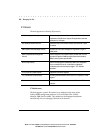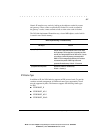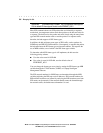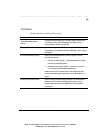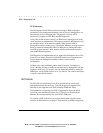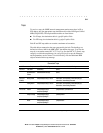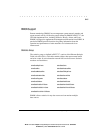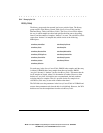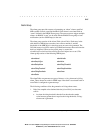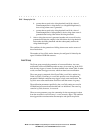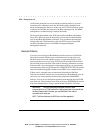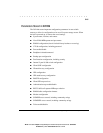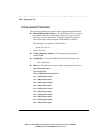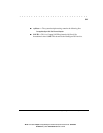
. . . . . . . . . . . . . . . . . . . . . . . . . . . . .
5-14
Managing the Hub
Writer:
Chris Seiter
Project:
Compaq Netelligent 2724/2824 Dual-Speed Hub User Guide
Comments:
File Name:
2824_5.DOC
Last Saved On:
06/25/97 5:32 PM
History Group
The history group tracks the network load over a period of time. The history
group consists of the History Control Table (historyControlTable) and the
Ethernet History Table (etherHistoryTable). The historyControlTable defines
the way in which samples are taken and specifies the data source, the polling
interval, and the number of samples (“buckets”) to store. The etherHistoryTable
stores these “buckets” of sampled data, which consist of the following
MIB objects:
etherHistoryIntervalStart etherHistoryDropEvents
etherHistoryOctets etherHistoryPkts
etherHistoryBroadcastPkts etherHistoryMulticastPkts
etherHistoryCRCAlignErrors etherHistoryUndersizePkts
etherHistoryOversizePkts etherHistoryFragments
etherHistoryJabbers etherHistoryCollisions
etherHistoryUtilization
For each entry in the historyControlTable, RMON takes samples until the entry
is deleted. If RMON takes more samples than there are buckets, RMON
“recycles” the entry’s “buckets” for the etherHistoryTable. This means that the
last N samples are stored, where N is the number of buckets. However, when
buckets are “recycled”, their indices are not renumbered; the hub continues
assigning indices to samples. Thus it is possible for the first sample in an
etherHistoryTable entry to start with a number other than 1.
The 2824 hub saves the parameters in the historyControlTable in NVRAM and
restores these parameters each time the hub is re-initialized. However, the 2824
hub does not save the sampled data from the etherHistoryTable.



